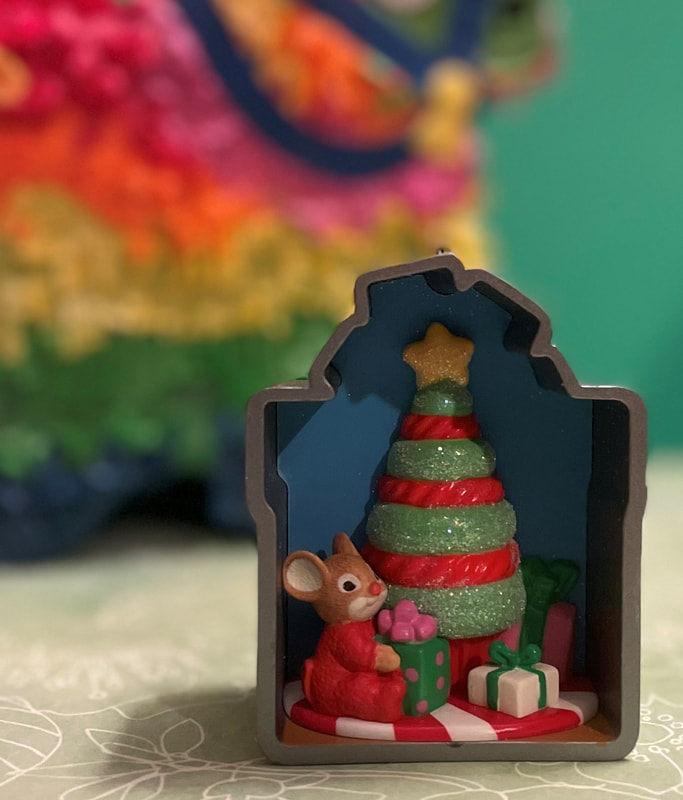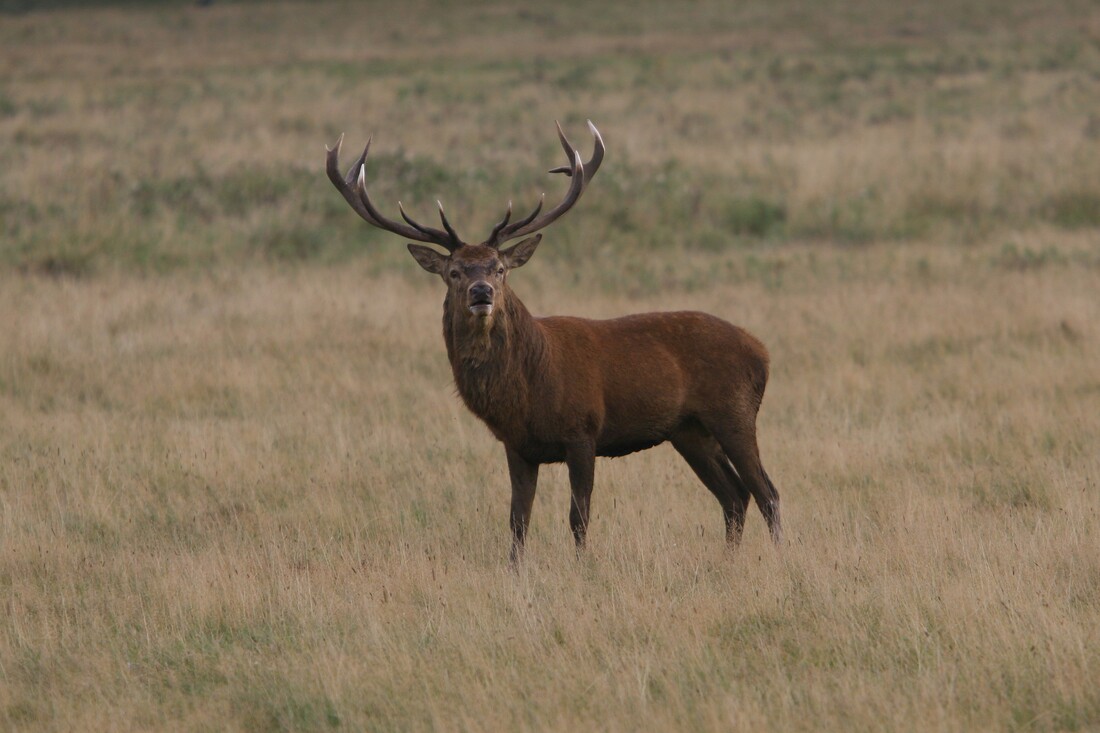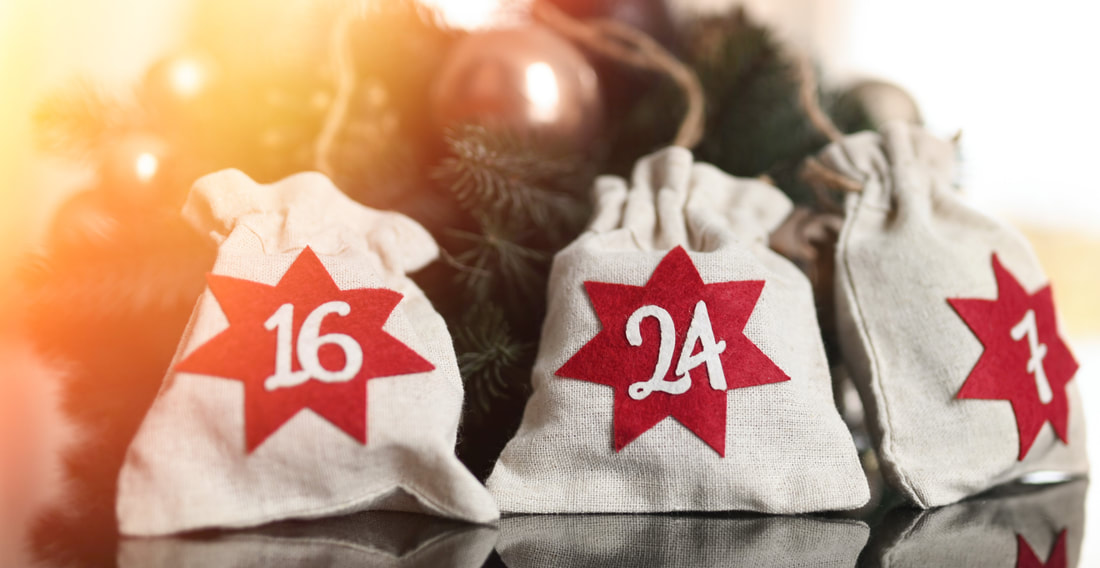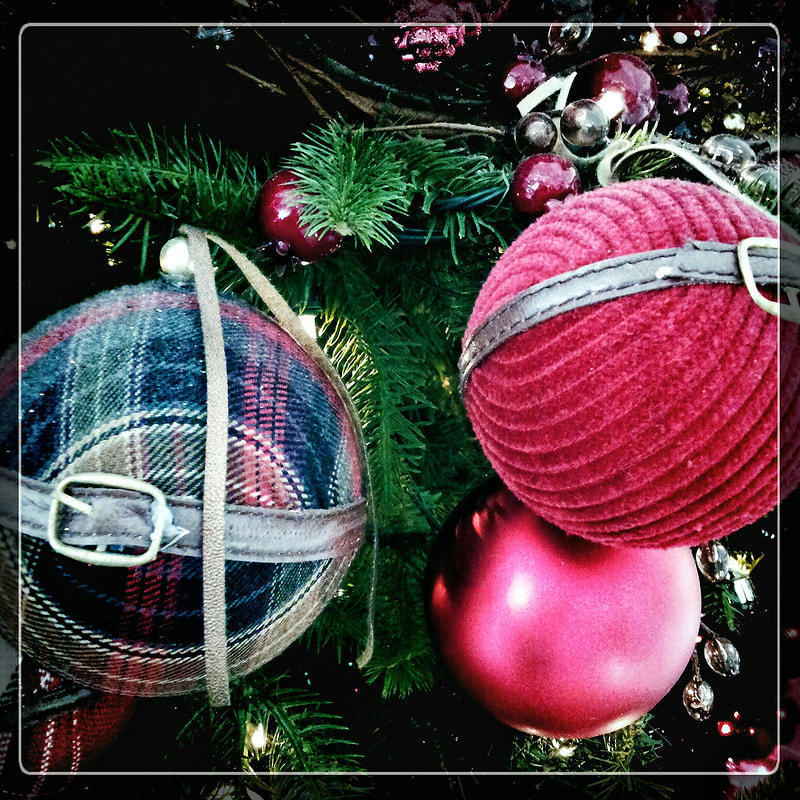0 Comments
This ornament is called "Polar Bear Santa," and is a fitting tribute to the saint we honor today - St. Ambrose. St. Ambrose was the Bishop of Milan from 374 to 397. He was a greatly respected theologian and preacher, and is especially remembered for his fight against Arianism, which held that Jesus Christ did not exist eternally with God the Father but was begotten by God at a later time. Therefore, Arianism does not believe in the revelation of the Trinity, 3 persons of equal stature, but holds a derivative view of the Son. Jesus was "like" God the Father, but not "con-substantive" with the Father.
St. Ambrose is also remembered for his preaching against paganism, especially any pagan cults sponsored by the state. Although not as great a threat to Christianity in the 4th century as earlier, enough pagan sects remained active to cause concern to St. Ambrose and others of the time. St. Ambrose featured prominently in the conversion of another great saint, St. Augustine of Hippo. One could imagine the small bear above could be St. Augustine, lifted and carried along by the older, wiser St. Ambrose. Just as the Polar Bear is carrying a tree, a symbol of St. Ambrose's preaching against paganism, which sought to worship Nature as a god, instead of created by God, we see those same evergreen boughs being carried by the young bear, but changed into the shape of a wreath, an old symbol of victory and immortality. And so, this ornament reminds us that none of us lift ourselves us to glory. Rather, we are always supported by the shoulders, i.e., the work, the prayers, the sacrifices, of those who came before us. It is their lives, their prayers and their inspiration, that bring us closer to God. In the case of these two saints, this support is obvious. Not only was St. Ambrose declared a Doctor of the Church, but so, too, was St. Augustine. In fact, without St. Ambrose, we may never have had a St. Augustine. It is a good idea, then, to think about whose shoulders we seek, whose approval we cherish. Who do we look to for inspiration? For guidance? For wisdom? And does this guidance lift us up, closer to victory, or merely distract us from it?
The sentiment in the scroll, extolling nature, fits in nicely with the Scottish theme for this year. Under his warm fur coat, Santa is wearing a robe that closely resembles one of the more well-known Scottish kilts. Much like the tradition of the Greek fisherman sweaters, the Scottish kilts are each identified with particular clans, most of them from the Highlands.
Kilts originally appeared in the 16th century and were originally ankle length. However, they were eventually shortened to knee length for practicality and ease of use. But it is the staff in Santa's hand that points especially to Scotland. The animal on the top of the staff is not a reindeer, but the mystical Scottish stag. Sir Walter Scott, himself a Scot, penned these words about the stag in his poem "Hunter's Song:" It was a stag, a stag of ten,
The stag, like the Scottish thistle, appears in family crests and shields as a symbol of strength, loyalty, freedom and to a certain extent, wildness, in the inability to be tamed or broken. As anyone who has ever taken a trip to Scotland knows, it only takes a few moments of wandering through the wild Scottish landscape to deeply understand this sentiment.
This Father Christmas reminds us of the beauty, gifts, strength and wildness of nature herself, and the One who made her. Although we have done our best to domesticate God, this ornament reminds us that it can't be done. As C.S. Lewis once commented about his character, the lion Aslan, "He's not a TAME lion," so too, this Father Christmas tells us that our God is not to be subdued and bridled. He's as wild and fierce as the Scottish stag.
Hallmark Gold Crown stores have been a recurring theme in my life. When I was a senior in high school, I took a part-time job in the Hallmark store in the mall. I worked there until I left for college in the fall, and it was my first experience of working in retail. I enjoyed the customers and got along well with my co-workers, but it was the actual products in the store that most captivated my imagination.
Years later, I again went back to work at another Hallmark store part-time. I thought I would be there just a few months, helping during the Christmas season. I ended up staying for almost nine years. Once again, it was the people and the products that inspired me to stay. Working at these two gift shops gave me a first-hand glimpse into the creative process. Although both stores were under the Hallmark umbrella, we carried creations from many other companies as well. As I unpacked and set up the displays for all these products, I couldn’t help but notice the artistry and collaboration involved in every item, whether it was a wall hanging, a card or a Christmas ornament. In each of these examples, someone had an original idea, an idea that communicated and said something. This idea was sketched out roughly in words or drawings, before undergoing a long process, moving through different hands and steps before it finally achieved its completed state and arrived in the store, ready to speak to the customers. Somewhere along the way during these years of working retail, I began to connect this process of artistic creation on a small level to the great process of creation God undertakes with each of us, as He forms and molds us in the different experiences and circumstances of our lives, helping us become the idea He had in mind at our creation. As Genesis has it, all men and women are entrusted with the task of crafting their own life: in a certain sense, they are to make of it a work of art, a masterpiece. (Pope John Paul II, Letter to Artists) Crafting our lives as a whole is a daunting task. Usually, I’m happy if I can try to make something out of each day, to do my best to respond in the present moment, going small and specific instead of big and expansive. In fact, it was through noticing the small and specific items in the Hallmark stores, especially the annual collection of Hallmark Christmas ornaments, that inspired me to start contemplating them more deeply and writing about them. As Catholics, we know that almost anything, properly used, can be turned to the service of God. Why not Christmas ornaments as well? This year, Hallmark came out with a 3D perpetual Advent count-down calendar. The calendar has a space above it to place an ornament for display. This gave me the idea of creating an Advent calendar of Christmas ornaments, of looking at some of these creations in the light of Advent, leading us into the Incarnation. This is a new idea, not one that I have completed already. Will I be successful in writing for 25 days this Advent? Who knows! But I’ll give it a try and see what happens. Now, just to be clear, I am not advocating that anyone rush out to buy more Christmas ornaments, Hallmark or otherwise. Instead, my hope is that by training ourselves to look at the items around us with a discerning eye, especially those items produced through using God-given artistic talents, we can use that same habit of discernment to see where God is working in our lives. If you’d like to follow along, you can start by reading my reflection for Advent Day 1: Jack Skellington in the Arms of an Angel. This Advent let’s take a closer look at the items around us. Let’s try to view them through the eyes of an artist, the eyes of a creator. Hopefully, this will help us to see the child in the manger a little more clearly, the one who came to give us the ability to be co-creators of the Kingdom of God. The day of joy returns, Father in Heaven, and crowns another year with peace and good will.
Help us rightly to remember the birth of Jesus, that we may share in the song of the angels, the gladness of the shepherds, and the worship of the wisemen. Close the doors of hate and open the doors of love all over the world… Let kindness come with every gift and good desires with every greeting. Deliver us from evil, by the blessing that Christ brings, and teach us to be merry with clean hearts. May the Christmas morning make us happy to be thy children, And the Christmas evening bring us to our bed with grateful thoughts, forgiving and forgiven, for Jesus' sake. Amen. -Henry Van Dyke "Give us, O God, the vision which can see Your love in the world in spite of human failure.
Give us the faith to trust Your goodness in spite of our ignorance and weakness. Give us the knowledge that we may continue to pray with understanding hearts. And show us what each one of us can do to set forward the coming of the day of universal peace." -Frank Borman, Apollo 8 space mission, 1968 "Advent is the perfect time to clear and prepare the Way. Advent is a winter training camp for those who desire peace. By reflection and prayer, by reading and meditation, we can make our hearts a place where a blessing of peace would desire to abide and where the birth of the Prince of Peace might take place.
-Edward Hays "When the song of the angels is stilled,
when the star in the sky is gone, when the kings and princes are home, when the shepherds are back with the flocks, then the work of Christmas begins: to find the lost, to heal those broken in spirit, to feed the hungry, to release the oppressed, to rebuild the nations, to bring peace among all peoples, to make a little music with the heart… And to radiate the Light of Christ, every day, in every way, in all that we do and in all that we say. Then the work of Christmas begins." -Howard Thurman |
The BlogDisclaimer:
The images on this website are either my own or are used under the Creative Commons license. No images have been edited, shared, or adapted. A link to each work that I do not own is provided at the bottom of the page. CC License: Archives
March 2024
Categories
All
|














 RSS Feed
RSS Feed
